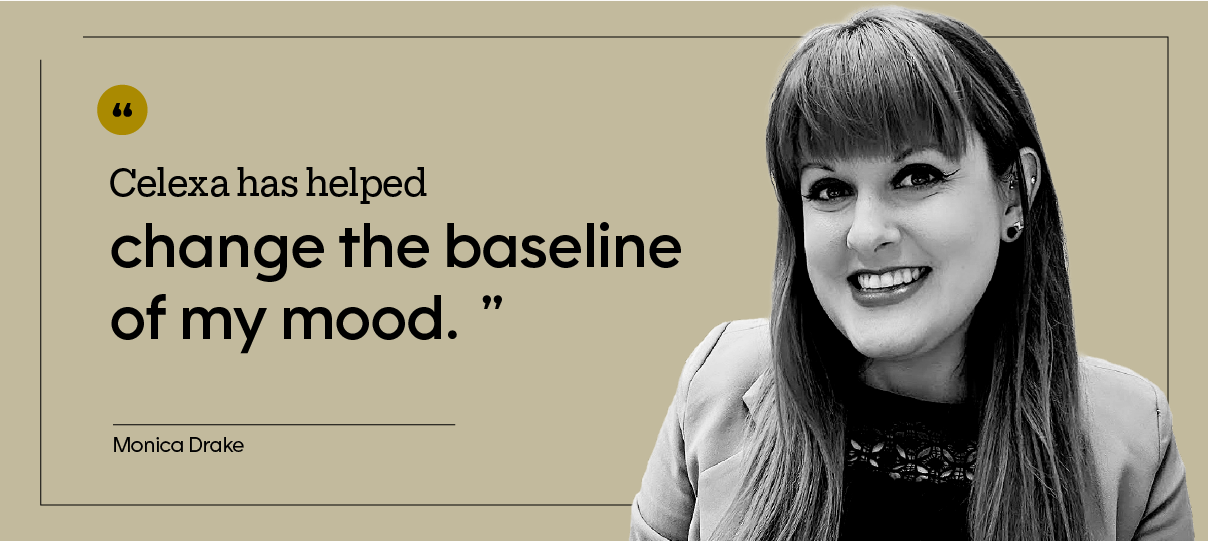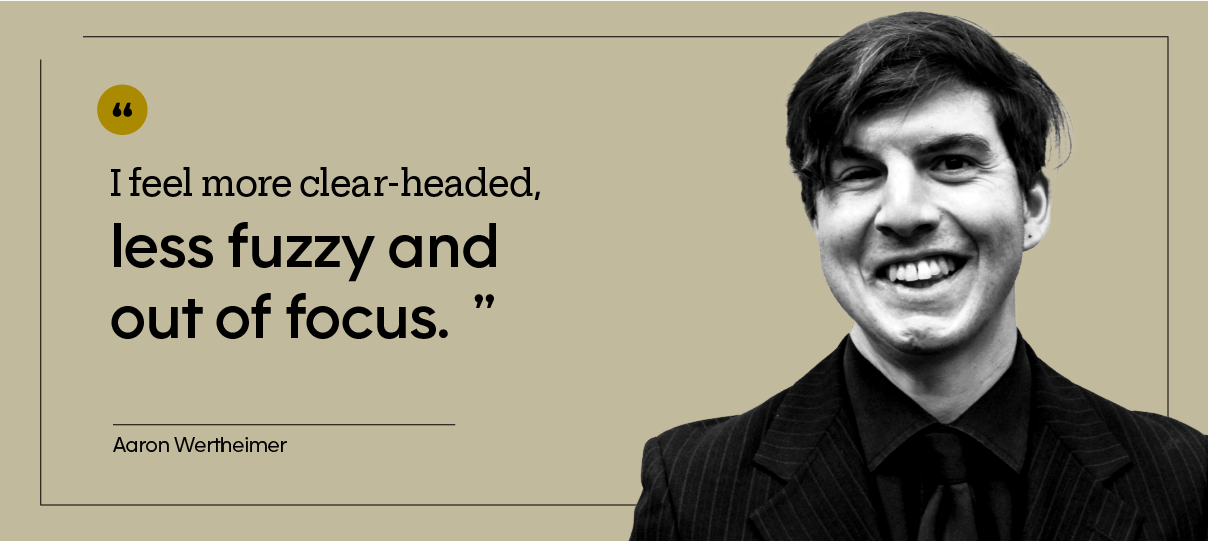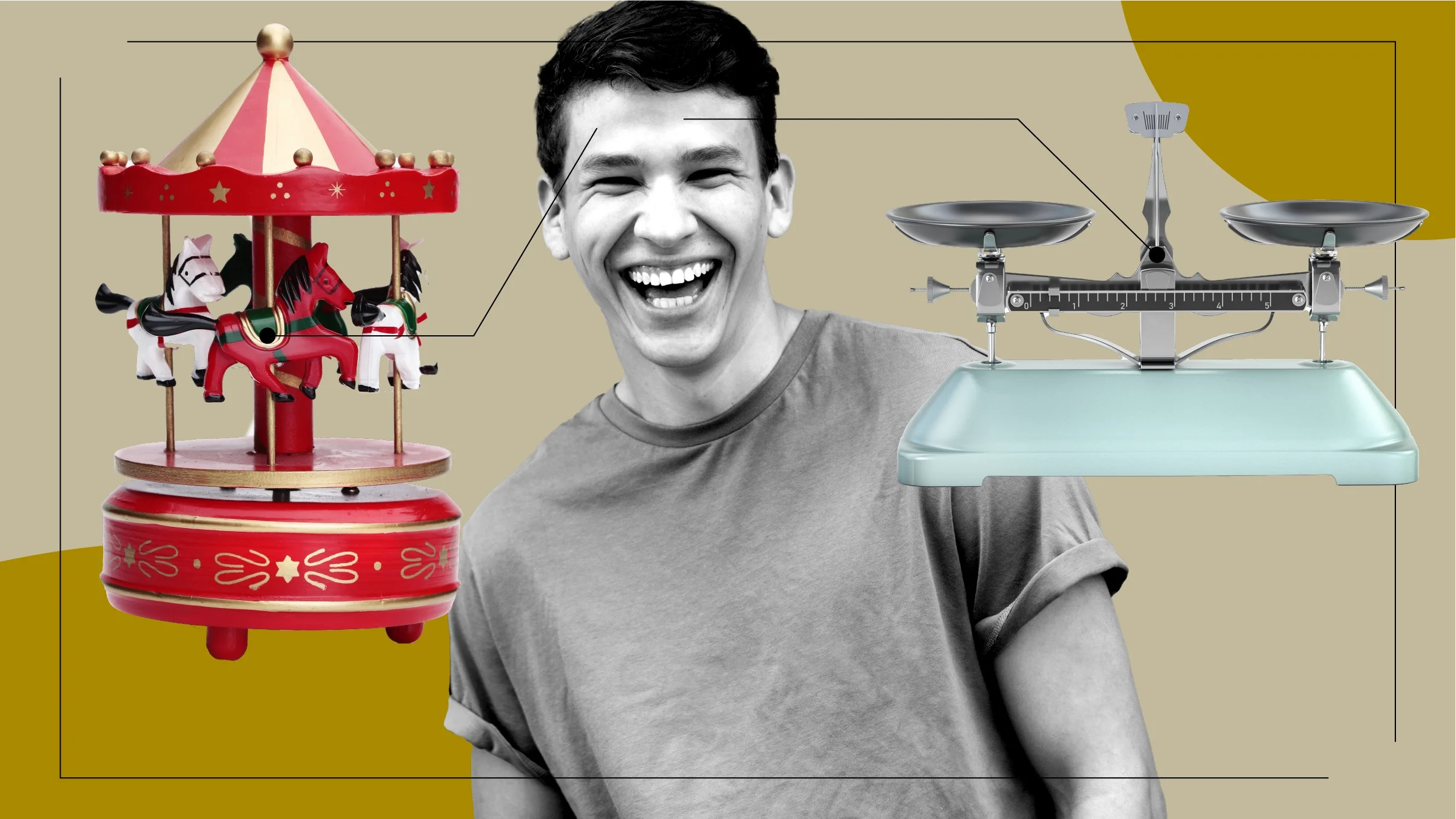Key takeaways:
Celexa (citalopram) is a first-choice treatment for depression in adults.
One of the people featured here experienced side effects briefly. The other two had no side effects.
Some people find that Celexa starts working about 2 weeks after starting treatment. But, it may take weeks or months to feel the full benefits of the medication.
Save on related medications
Celexa is the brand name for citalopram, one of many medications prescribed to treat depression in adults.
Though it is approved to treat depression, it can also be prescribed off-label to help with other mental health conditions, such as anxiety.
Celexa is part of a class of medications for depression called selective serotonin reuptake inhibitors (SSRIs). Some common side effects are nausea and dry mouth.
People typically take Celexa in pill form once a day in the morning or evening.
Research has shown people may notice their mood improves within 2 weeks of starting treatment. But it can take longer to experience the full effects.
Here, three people describe what it’s like to take Celexa.
Side effects of dizziness and fatigue went away
Monica Drake, who is 35 and lives in Royal Oak, Michigan, has generalized anxiety disorder and situational depression.
She has been taking Celexa for both conditions every morning since she was 19 years old.
Monica, a communications specialist with Blue Cross Blue Shield of Michigan, says it took about a month for her to notice the benefits. But she did experience some side effects early on.

“When I first started, I experienced some dizziness and fatigue. But these side effects went away within the first few weeks,” says Monica, who also writes a blog to raise awareness about suicide and help erase the stigma associated with mental health disorders.
“While I still struggle with anxiety — and will for the rest of my life — Celexa has helped change the baseline of my mood,” Monica says. “Prior to taking it, I would think about the death of myself and my loved ones almost obsessively.”
Before Celexa, Monica says, she used to feel extremely nervous in any social situation. She would often experience a ringing in her ears and tunnel vision, both symptoms of anxiety.
“While I still get bouts of nervousness, social anxiety, and increased heart rate, and sweating, Celexa has definitely helped me to manage [my symptoms] and has kept my anxiety from being a constant state,” she says.
It took 3 months for Celexa to kick in
Jackie Hodges, who is 32 and lives in Middleville, Michigan, also takes Celexa every day.
She takes it in conjunction with daily lithium to manage bipolar depression and anxiety. This is considered an off-label use of Celexa, but it’s supported by experts and clinical evidence.
“Celexa helps manage my anxiety and bring up my depressive levels,” she says. “My lithium helps level out my moods.”
Jackie says her anxiety started at age 11, and signs of depression started about 3 years later.
Before she was diagnosed, Jackie says she was “a mess.”
“I felt like I had to hide it from my parents,” she says, adding that she was the oldest of her sisters and felt she had to be the strong one.

Her diagnosis has changed several times, from bipolar depression to treatment-resistant depression to major depressive disorder and back to bipolar depression along with generalized anxiety disorder.
“I was a lab rat for meds at the time,” she says. “Celexa was the one that worked. I finally had some hope.”
She says Celexa was also the one medication that didn’t cause side effects. She says her side effects with another medication included vomiting, headaches, sleeping 12 hours at a time, and two episodes of hallucinations.
“Before Celexa and lithium,” Jackie says, “I never thought I’d make it to 30.”
Over almost 12 years of treatment, her Celexa dosages have changed. But she says it’s the one constant medication she’s taken.
Jackie says Celexa and lithium help keep her in the job she loves as a caregiver in an assisted living facility.
Without her medications, she says, “my anxiety and depression would be too high.”
For people just starting to take it, she advises patience: “It doesn’t always work right away.”
In her case, it took about 3 months to see a difference with Celexa.
“In the end, finding what works for you is worth it,” she says.
Celexa helps copywriter feel more focused
Aaron Wertheimer, who is 31 and lives in Costa Mesa, California, says he has probably been living with depression and anxiety for most of his life. He was officially diagnosed 10 years ago.
Aaron, a copywriter, says that before Celexa he took another medication for depression for about 8 years.
“I prefer Celexa, as Celexa leaves me feeling more in tune with my senses,” he says, adding that he has had no side effects.
He says it took about 2 weeks to start feeling the effects of the medication. The first main effect he experienced was what he called “a feeling of being able to let go of negative thoughts a bit easier.”
Now, he says, “I feel more clear-headed, less fuzzy and out of focus, and more mild-mannered.”
Aaron says with Celexa, he also feels less drowsy, less numb, and more well-balanced. His previous medication left him feeling sleepy.

Without Celexa, “I’m in my head a lot,” he says. “It feels like a flickering lightbulb going on and off in my head. You notice the light isn’t working, and you’re trying to screw it back in.”
With Celexa, “I’m not ruminating as much,” he says. “I’m not overthinking and critical of that self-talk. It helps me focus on the present moment.”
What does the pharmacist say?

Christina Aungst, PharmD
Pharmacy Editor
Celexa (citalopram) is a commonly prescribed antidepressant. It belongs to a group of medications called selective serotonin reuptake inhibitors (SSRIs). It works by raising levels of serotonin in the brain. Serotonin is a chemical messenger that plays a role in balancing your mood, among other functions.
Celexa is FDA-approved to treat major depressive disorder (commonly called depression). But healthcare providers sometimes prescribe it off-label for other mental health conditions, such as anxiety. Typically, people take Celexa by mouth once a day.
Like other SSRIs, Celexa doesn’t work right away. Some people start to notice a difference within the first 2 weeks of starting it. But it can take several weeks or months to experience the medication’s full effects. It’s common for people to have side effects with SSRIs before they notice positive results. So patience is key when you’re first getting started.
Celexa is generally well tolerated, but side effects are possible. Nausea and dry mouth are common. You could also experience sleep changes or sexual side effects, such as low sex drive. However, Celexa seems to be one of the best tolerated SSRIs on the market. So if you’ve had bothersome side effects with other SSRIs, your healthcare provider may suggest trying Celexa.

Why trust our experts?




















